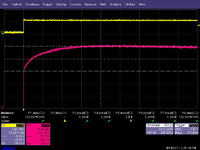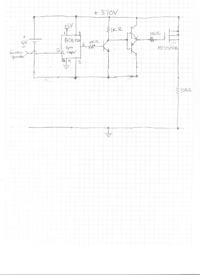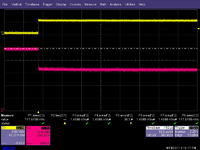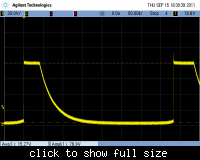pastro
Junior Member level 3
Hi all,
I'm using the MTP2P50EG P-Channel power MOSFET in order to attempt to switch a high voltage. I've prototyped the attached circuit, along with a scope screenshot of what I'm seeing at the output.
The trouble is that the waveform quickly shoots up to 350V in ~200ns, but then takes a long time to rise the extra 20V to 370V. My questions are 1.) Why does this happen? 2.) How to I fix it.
I need the waveform to shoot up to it's final voltage (370V) in this case, and stay there within ~500ns. In other words, I need much more square corners on the waveform.
Thanks!
Pastro


I'm using the MTP2P50EG P-Channel power MOSFET in order to attempt to switch a high voltage. I've prototyped the attached circuit, along with a scope screenshot of what I'm seeing at the output.
The trouble is that the waveform quickly shoots up to 350V in ~200ns, but then takes a long time to rise the extra 20V to 370V. My questions are 1.) Why does this happen? 2.) How to I fix it.
I need the waveform to shoot up to it's final voltage (370V) in this case, and stay there within ~500ns. In other words, I need much more square corners on the waveform.
Thanks!
Pastro



